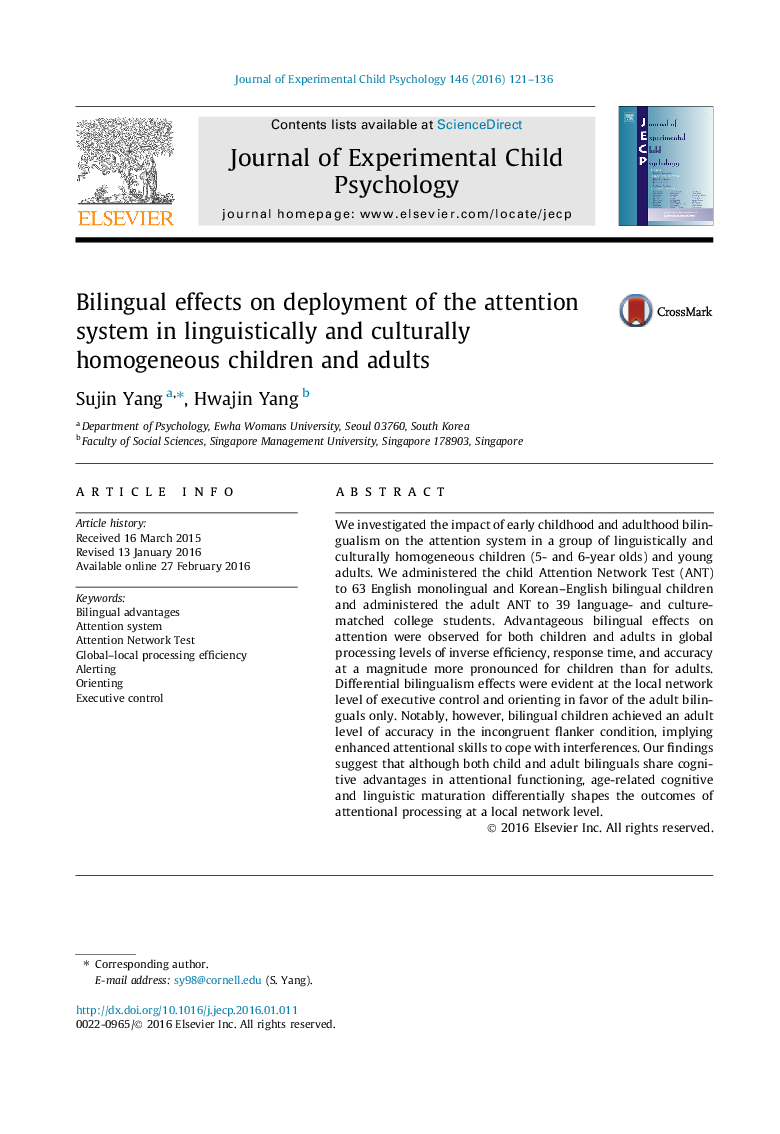| Article ID | Journal | Published Year | Pages | File Type |
|---|---|---|---|---|
| 917926 | Journal of Experimental Child Psychology | 2016 | 16 Pages |
•An integrative measure of the Attention Network Test was used.•Linguistically and culturally homogeneous bilingual children and adults were tested.•Bilingualism effects were found in all global measures of attention at markedly larger magnitude for children than adults.•Child and adults bilinguals differed in two local network scores (orienting and executive control).•Bilingual children achieved an adult level of accuracy in the incongruent flanker condition.
We investigated the impact of early childhood and adulthood bilingualism on the attention system in a group of linguistically and culturally homogeneous children (5- and 6-year olds) and young adults. We administered the child Attention Network Test (ANT) to 63 English monolingual and Korean–English bilingual children and administered the adult ANT to 39 language- and culture-matched college students. Advantageous bilingual effects on attention were observed for both children and adults in global processing levels of inverse efficiency, response time, and accuracy at a magnitude more pronounced for children than for adults. Differential bilingualism effects were evident at the local network level of executive control and orienting in favor of the adult bilinguals only. Notably, however, bilingual children achieved an adult level of accuracy in the incongruent flanker condition, implying enhanced attentional skills to cope with interferences. Our findings suggest that although both child and adult bilinguals share cognitive advantages in attentional functioning, age-related cognitive and linguistic maturation differentially shapes the outcomes of attentional processing at a local network level.
